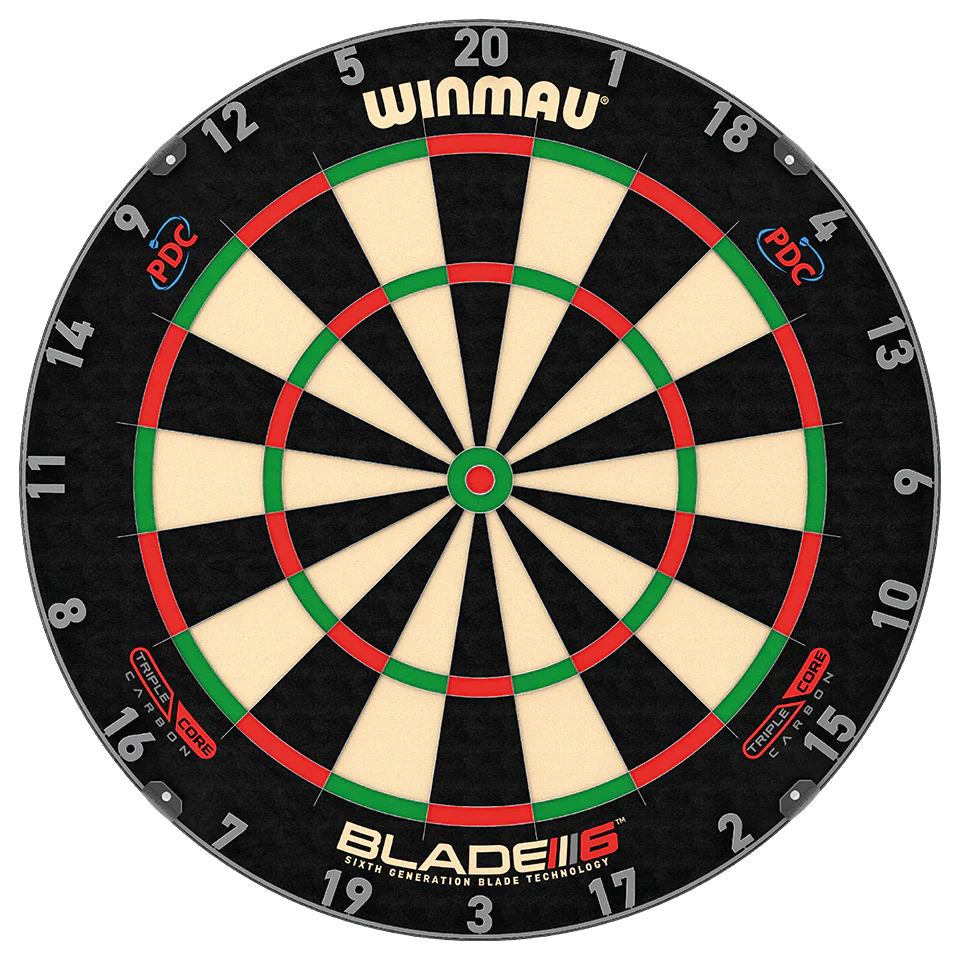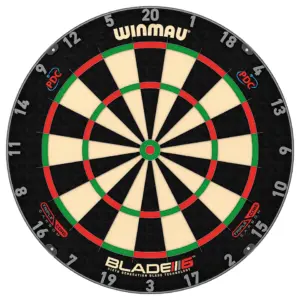Darts scoring involves players throwing small missiles, known as darts, at a circular target called a dartboard. The score is calculated based on where the dart lands on the board.
Darts is a game of skill and precision that has garnered a global following. Scoring in darts is straightforward but requires players to have a strategic approach to win. Each section of the dartboard carries a different point value, with the outer rings and central bullseye having special significance.
Successful players master the art of aiming for the highest-scoring segments to maximize their points. With various games like ‘501’ and ‘301’, the goal is often to reduce the score to exactly zero through calculated throws. Playing darts hones hand-eye coordination and mental arithmetic, making it a popular pastime in pubs and competitive leagues alike. Understanding the scoring system is crucial for anyone looking to enjoy or compete in this classic sport.
Aiming For The Bullseye
Understanding darts scoring is key to mastering the game. The dartboard is made up of different scoring sections, each with a specific point value. Hitting a single area scores the number on the outer ring. Landing a dart in the double ring, the thin outermost circle doubles the points. The thin inner circle is the triple ring, tripling the points of that section.
Players aim for the bullseye, which has two sections: the outer bull scores 25 points, and the inner bull, or the bullseye, scores 50 points. To maximize scores, skilled players aim for the triple ring of the 20-point section. This earns them 60 points per dart, the highest score on a single throw. Knowing where to aim can greatly increase your total score.

Credit: www.amazon.com
Setting Up Your Game
Playing darts requires a few key items. A dartboard and darts are essential. Make sure to hang the dartboard at the regulation height. The bullseye should be 5 feet 8 inches (1.73m) off the ground. The throwing line, known as the oche, must be 7 feet 9.25 inches (2.37m) from the dartboard’s face. Players throw their darts from behind this line.
To ensure a fair game, follow these simple rules:
- Each player throws three darts per turn.
- Keep score on a chalkboard or electronic scoreboard.
- Darts that bounce or fall off don’t count.
- The winner is the first to reach the agreed-upon score.
Scoring Basics
Darts scoring is a key part of the game. To score points, players throw darts at a circular target. This target is called a dartboard. Each section on the dartboard has a different point value.
The dartboard is divided into 20 numbered sections. From 1 to 20, these sections give points matching their number. Hitting one of the large portions of these sections scores the actual points.
The outer ring is important. Hitting this doubles the section’s point value. This is called a “double”. The inner ring triples the points, known as a “triple”. Right in the center, the bullseye exists. The outer bull scores 25 points and the inner bull, or “bulls-eye”, scores 50 points.
Mastering The Techniques
Mastering darts begins with a proper grip and stance. Your grip on the dart affects accuracy and precision, while your stance provides stability and control. Hold the dart between your thumb and two or three fingers. Ensure your grip is neither too tight nor too loose. The ideal stance is to have your leading foot slightly forward, body angled towards the target, and feet shoulder-width apart.
Moving to throwing mechanics, there are key points to remember. Always keep your elbow at a consistent angle, and let your forearm do the work. As you aim for the dartboard, focus on a smooth, controlled release. Eyes should remain fixed on the specific target throughout the motion. After throwing, your hand should be pointing at the target, reinforcing follow-through. By practicing these techniques, you’ll see improved accuracy and scoring in your game.
Score-boosting Strategies
To master darts scoring, aim for the triple twenty segment. It scores the most in one dart. It gives you sixty points. The bullseye is also key, worth fifty points.
Develop a strong combo strategy. Hit a double to finish a game. Or aim for three different triples for a high score. Remember, practice makes perfect. Aim, throw, and score!
Common Scoring Mistakes
Players often slip up in darts by miscounting points. Simple errors can disrupt the game flow. Always double-check your throw scores, especially during fast-paced turns. High-pressure situations increase the chances for mistakes.
Forgetting to account for double and triple scores is another common oversight. These areas on the dartboard can drastically change a player’s score, so it’s crucial to pay attention. Noting every dart’s landing zone is key. It ensures accurate scorekeeping throughout the match.
Maintaining sharp focus on each throw will help keep score tallies correct. Practice and consistency are vital for players aiming to improve their scoring accuracy.
Maintaining Consistency
Maintaining a consistent score in darts is key for any player. Effective practice drills are crucial to achieve this. A simple yet powerful drill is the around the clock exercise. Here, players aim for each number on the dartboard, sequentially.
Another essential aspect is maintaining sharp mental focus during games. A clear mind enables better aim and decision-making. Techniques like visualization and deep breathing can help players stay calm and concentrated.
- Target practice: Hone aiming skills by hitting specific segments repeatedly.
- Countdown: Start from 301 or 501 and work down to zero to improve accuracy under pressure.
- Repetition: Consistently practice doubles, trebles, and bullseye hits.
Credit: www.quora.com
Advanced Scoring Techniques
Darts players must finish on a double to win a leg. This rule, known as ‘double-out’, is crucial in darts scoring. To do this efficiently, you need good setup shots. These are throws that leave you with an even-numbered double.
Understanding out charts is key to mastering check-outs. An out chart guides you on which scores to aim for. This guides your throws to leave a finishable double. For example, if you have 40 points left, aim for double 20.
| Score Left | Target for Last Dart |
|---|---|
| 40 | Double 20 |
| 32 | Double 16 |
| 24 | Double 12 |
| 16 | Double 8 |
| 8 | Double 4 |
Always think ahead and aim for a score that leaves a preferred double. A smart setup shot can make the difference between winning and losing.
Scoring In Professional Play
Professional darts tournaments follow specific scoring rules that players must know. Dart scores depend on the dart’s landing zone on the board. Each area of the dartboard has a different point value. Players aim for the triple or double rings to maximize their scores.
Watching professional players can help new players improve their game. By observing, newcomers learn strategic throws and scoring techniques. Pros show the importance of consistent throwing patterns and accuracy. Practice and attention to detail are critical for mastering darts scoring.
Bringing It All Together
Mastering darts scoring is crucial for upping your game. Remember, practicing your aim and throw directly influences your score. Keeping track of your progress with a scoring chart is helpful. Use apps or score sheets to stay on point. To avoid stalling your progress, ensure consistent practice. Aim to reach a higher average score with each session. Set personal goals and try to hit them with every game.
Darts scoring isn’t just about the points. It also involves strategy and knowing which sections to hit. Sharpening your scoring technique can turn a beginner into a seasoned player. Engage with other dart enthusiasts to exchange tips and strategies. Keep an eye out for scoring patterns to adjust your technique accordingly.

Credit: www.skysports.com
Conclusion
Mastering darts scoring is a game-changer. Embrace these tips and watch your accuracy improve. Remember, consistent practice leads to scoring prowess. Ready to hit the bullseye? Grab those darts, and let the points soar! Keep playing, keep scoring, and most importantly, keep enjoying the game.






